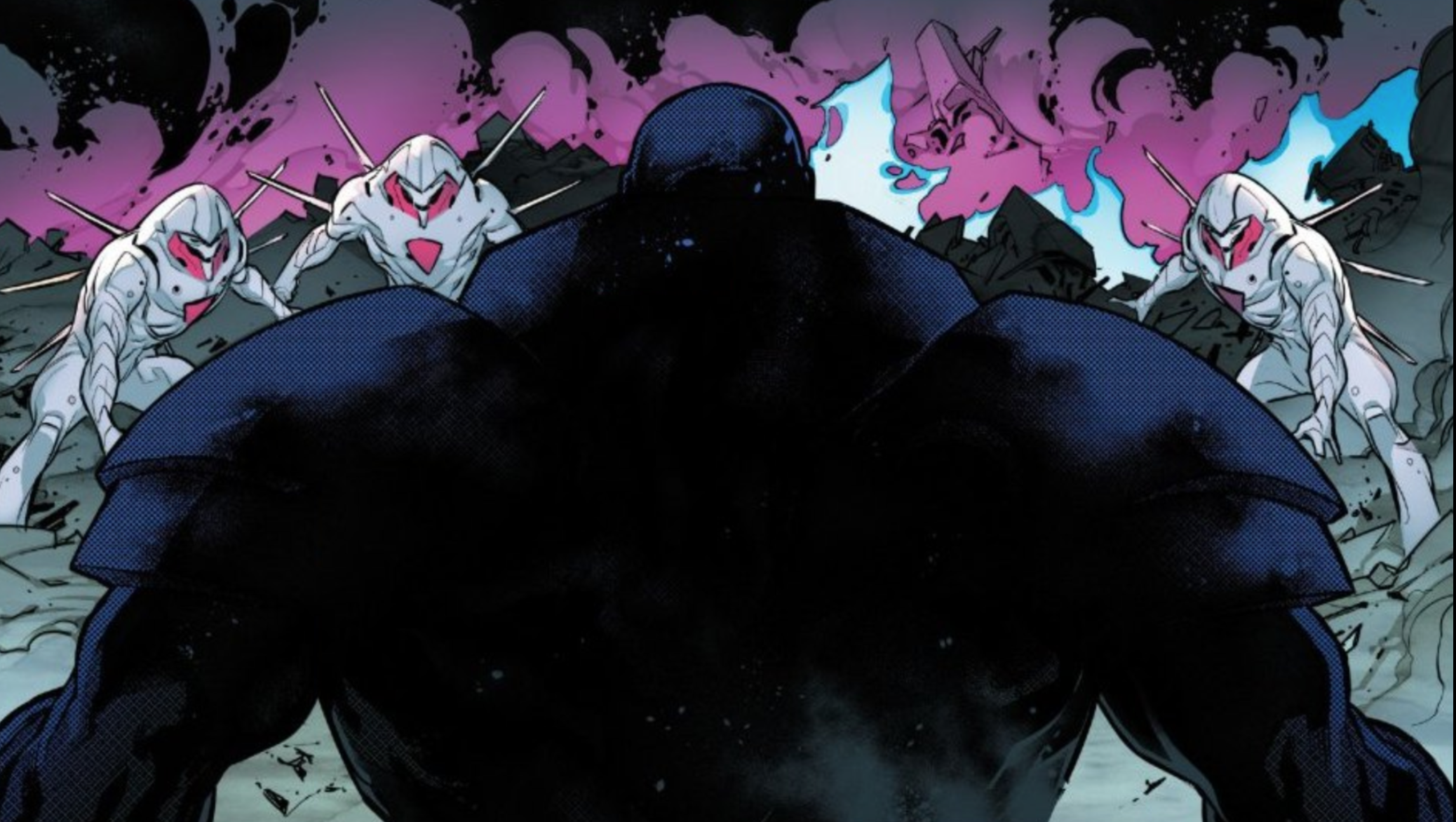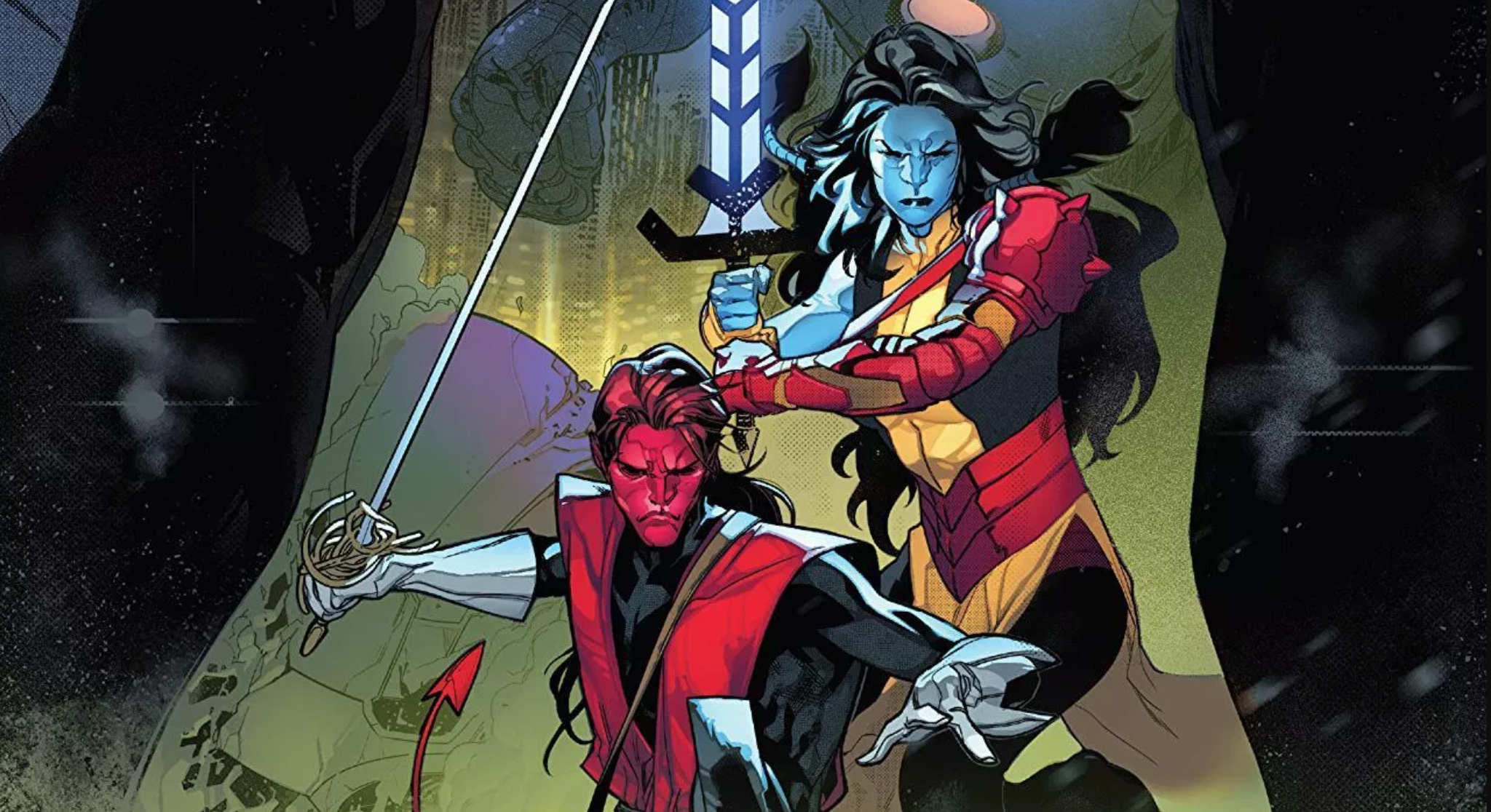This Is What You Do
“This Is What You Do”
Powers of X #3 (2019)
Written by Jonathan Hickman
Art by R.B. Silva
Color art by Marte Gracia
“This Is What You Do” is an issue that dials back expectations somewhat. After four consecutive issues of game-changing plot and dense world building, this issue zooms in on a particular plot thread – the year 100 X-Men’s suicide mission to take down Nimrod – and focuses on shading in established ideas and delivering a plot payoff that firmly establishes the stakes of the next sequence of the story in which Cyclops leads a team against Orchis in the hopes of preventing the creation of Nimrod altogether. The big reveal at the end of the issue that this is all taking place in Moira’s 9th life ties together most of the plot action in the first act of the story, explaining how Xavier knew to have Mystique apprehend the Orchis plans that set in motion Cyclops’ mission.
The reveal is excellent and I particularly like Moira 9’s death scene as she’s killed by Wolverine to get on with her mission in her 10th life. “This is what you do,” she tells him as he readies himself to stab her, a turn on his classic “the best there is at what he does” catchphrase that feels both oddly hopeful and grimly fatalistic about Wolverine’s role in any narrative. Moira has a perspective on him that’s closer to that of the audience than anyone in the story. (The scene also visually echoes Wolverine’s mercy killing of Jean Grey in Grant Morrison’s “Planet X” arc.)
The trouble is, at least on my end, is that I’ve spent enough time trying to predict the plot of this story that I’d already figured out that the “future” was in Moira 9’s lifetime. There is a nice sense of validation in correctly parsing the clues, but it’s been a lot more fun to be entirely surprised with plot developments, as I was last week with the Phalanx reveal in the far future storyline. I can’t imagine I’ll be able to resist further speculation as it is a big part of the fun of following all of this, but I have to keep in mind that it’s most enjoyable when Hickman is several steps ahead of me and catches me off guard.
This is not to say there weren’t any surprises in this issue. The introduction of the human Church of Ascendency and their ritualistic transformation into cyborgs at the top of the issue provides some backstory for the plot in the distant future plot thread with the Nimbus worldmind and the Phalanx. It’s also a bit jarring for Cardinal and Rasputin to apparently die along with the rest of the future X-Men so early in the story after such an auspicious debut, though it would not be unreasonable for them to pop up again one way or another. But given Jonathan Hickman’s stated love of “The Phalanx Covenant” and prominent use of characters and concepts for that story, the fate of these characters may be a nod to the way Scott Lobdell gave Blink a memorable debut in that story only to quickly kill her off and have her reappear in a different and even better form shortly afterward in “Age of Apocalypse.”
Apocalypse’s role in this story is interesting. The Moira 9 timeline is essentially an inverted “Age of Apocalypse” in which Apocalypse, under the influence of his consigliere Moira, takes the Magneto role in the story as the flawed replacement for Charles Xavier, and Nimrod replaces him as the despotic monster presiding over a dystopia. This Apocalypse is still very much Apocalypse-y right on down to having four horsemen, but he’s also rather noble and willing to sacrifice his supposedly eternal life in order to complete a mission to give hope to the mutants of Moira’s next lifetime. His final battle with Nimrod is poignant and echoes the Magneto/Apocalypse duel at the end of “Age of Apocalypse,” except for the lack of catharsis. Magneto got to rip Apocalypse in half while he gloated at him; Apocalypse just gets womped on by four Nimrods at once before the singularity unleashed from Xorn’s black hole skull seems to swallow up pretty much everything.
“This Is What You Do” breaks some rhythms established by the previous issues, most obviously by deviating from the HOX/POX/HOX/POX pattern, and the established format of Powers issues showing us story in each of its four eras. This works out pretty well in terms of keeping the story from feeling too rigid in its rhythms, and allows for some traditional superhero action after a lot of rather cerebral info dumps and talky scenes. There’s a terrible tendency in contemporary comics, particularly those produced by Marvel, for action to be doled out in a way that suggests the writer is merely servicing genre conventions and giving the artist something “fun” to draw, and this is very much not that. Hickman and R.B. Silva provide big payoffs and high drama, and present action scenes fully grounded in the horror of violence. They effectively convey the bravery of these X-Men and the cold cruelty of their robotic enemies.
Silva’s art continues to evolve into an increasingly expressive and nuanced style as he moves through this series. He’s clearly having a lot of fun with his inking process – there’s a liberal usage of Ben-Day dots for shading, judicious deployment of digital blur effects, and a clever use of fingerprints in rendering Wolverine’s scorched body in the final sequence. I love the way both he and Pepe Larraz are combining the best elements of digital and physical illustration to produce pages that convey a slickness with an underlying loose kinetic energy of pencil and ink on paper.


